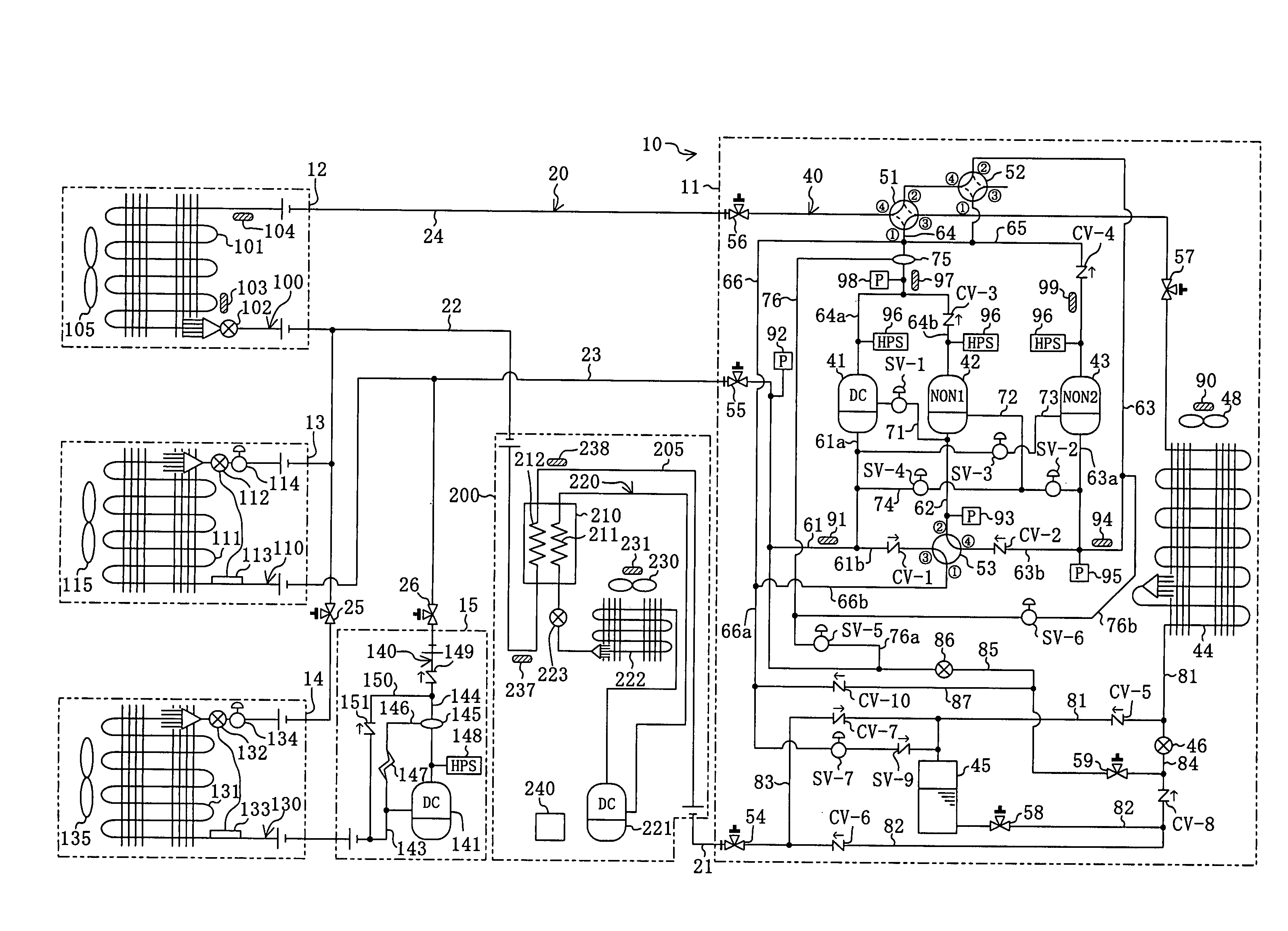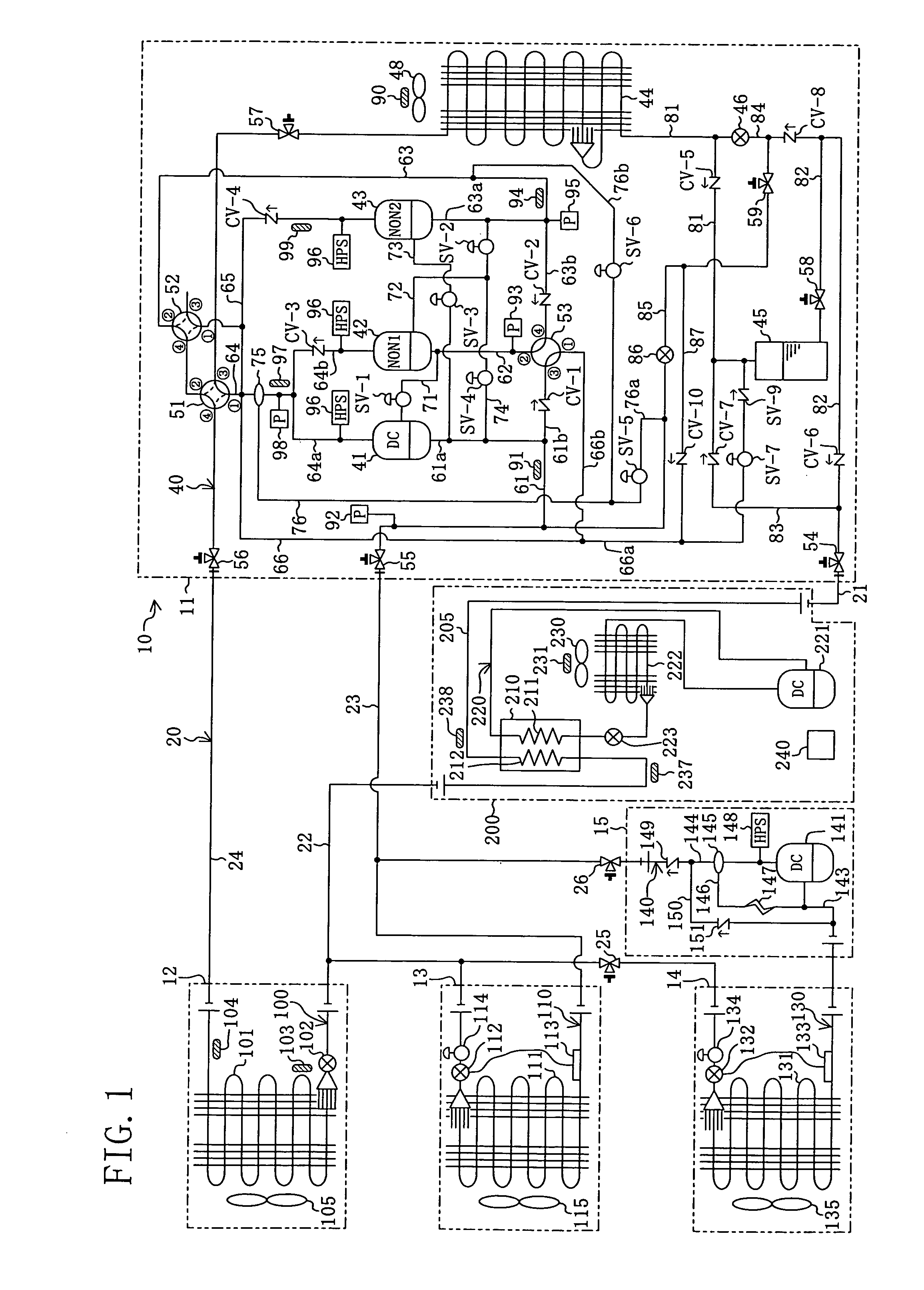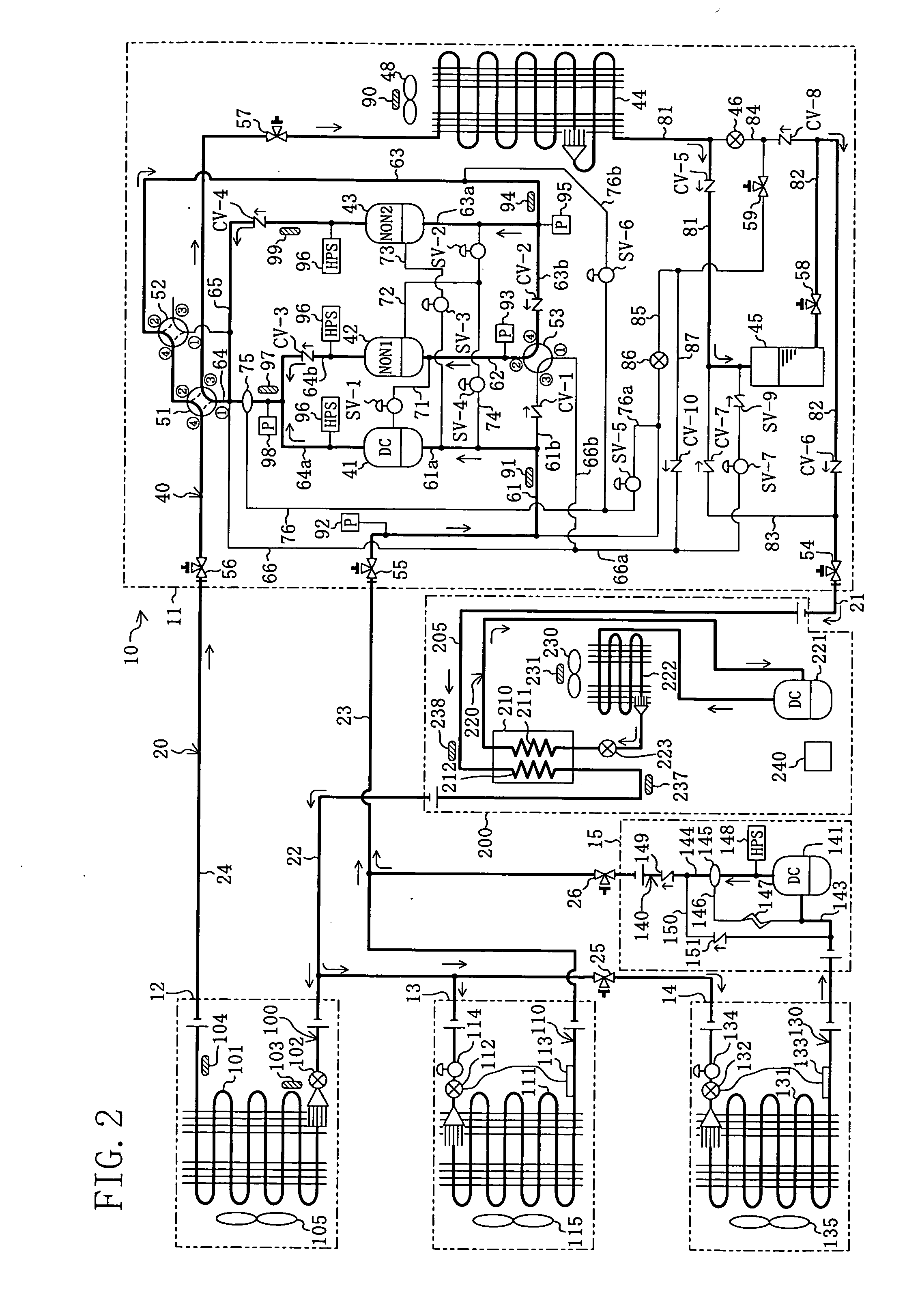Refrigerating Apparatus
a technology of refrigerating equipment and compressor, which is applied in lighting and heating equipment, program control, instruments, etc., can solve the problem of not placing the supercool unit in operation, and achieve the effect of enhancing cooling capacity, reducing the number of operational man-hours, and reducing the power consumption of the compressor
- Summary
- Abstract
- Description
- Claims
- Application Information
AI Technical Summary
Benefits of technology
Problems solved by technology
Method used
Image
Examples
first embodiment
of the Invention
[0085]A first embodiment of a refrigerating apparatus (10) according to the present invention is intended for installation in a convenience store or the like and provides air conditioning of the inside of the store and cooling of the inside of showcases. As shown in FIG. 1, the refrigerating apparatus (10) is provided with a supercool refrigerant circuit (220) which includes a supercool heat exchanger (210) and a supercool compressor (221) and through which supercool refrigerant as cooling fluid flows, and a refrigerant circuit (20) which includes utilization side heat exchangers (101, 111, 131) and heat source side compressors (41, 42, 43). The refrigerating apparatus (10) is configured such that refrigerant flowing through the refrigerant circuit (20) is supercooled through the supercool heat exchanger (210) of the supercool refrigerant circuit (220). In other words, the supercool refrigerant circuit (220) constitutes a cooling fluid circuit in accordance with the ...
second embodiment
of the Invention
[0182]Instead of reducing the power consumption of the supercool compressor (221) by directly stopping the supercool compressor (221) as in the first embodiment, the operating frequency of the outdoor fan (230) of the supercool outdoor heat exchanger (222) is increased to thereby reduce the power consumption of the supercool compressor (221) in the refrigerating apparatus (10) of the second embodiment. In other words, in the present embodiment, the operating frequency of the supercool compressor (221) is held constant.
[0183]More specifically, when the degree of supercooling of the refrigerant of the refrigerant circuit (20) is large, it is estimated that power consumption relating to the refrigerant circuit (20) is small, and the operating frequency of the outdoor fan (230) is not changed by the controller (240). On the other hand, when the degree of supercooling is small, it is estimated that power consumption relating to the refrigerant circuit (20) is large, and t...
third embodiment
of the Invention
[0185]Unlike the first embodiment in which the cooling fluid circuit is formed by a refrigerant circuit through which supercool refrigerant is circulated, the cooling fluid circuit in the refrigerating apparatus (10) of the third embodiment is formed by a cooling water circuit through which cooling water flows, which is not shown diagrammatically. More specifically, this cooling water circuit includes, in addition to the supercool heat exchanger (210), a pump, wherein cooling water held in a cooling tower is delivered by the pump to the supercool heat exchanger (210). Then, in the supercool heat exchanger (210), the cooling water exchanges heat with refrigerant in the refrigerant path (205), as a result of which the refrigerant is cooled. To sum up, in the cooling fluid circuit of the present embodiment, cooling water flows as a cooling fluid.
[0186]In this case, the controller (240) regulates the operating capacity of the pump based on the degree of supercooling of t...
PUM
 Login to View More
Login to View More Abstract
Description
Claims
Application Information
 Login to View More
Login to View More - R&D
- Intellectual Property
- Life Sciences
- Materials
- Tech Scout
- Unparalleled Data Quality
- Higher Quality Content
- 60% Fewer Hallucinations
Browse by: Latest US Patents, China's latest patents, Technical Efficacy Thesaurus, Application Domain, Technology Topic, Popular Technical Reports.
© 2025 PatSnap. All rights reserved.Legal|Privacy policy|Modern Slavery Act Transparency Statement|Sitemap|About US| Contact US: help@patsnap.com



